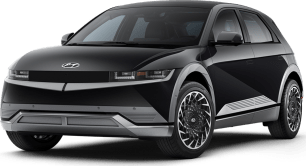This is a surprisingly practical family car with all passengers enjoying good head- and legroom. Front passengers enjoy the most storage and amenities but the back row isn't forgotten.
The front seats are wide and well-padded and I like their electric adjustment (including lumbar support).
That said, the wide windows create more chances of the sun hitting your eyes but the extendable sun visors make things more comfortable.
The storage options up front are very good. I fell in love with the sliding middle console and demonstrated it (to what I imagine was rapt attention) to every one of my passengers.
As to what purpose it serves, I'm not 100 per cent sure, but it's cool nonetheless.
There's a big cubby underneath the armrest that fit my handbag and houses the wireless charging pad and an additional two USB-A ports.
Other storage options include the large glove box drawer, two good-sized cupholders and a smaller tray inside of the armrest.
Plus, you get drink bottle holders in each door (front and back) and a strangely-shaped cubby underneath the multimedia USB-A port and 12-volt socket.
The low positioning of the multimedia port is an odd choice because while the car features Apple CarPlay and Android Auto, they're a wired connection. The port is a little awkward to reach and you have a trailing cable in the cabin.
The 12.3-inch touchscreen multimedia system is responsive and easy to use. It was easy to connect my iPhone to and I like the built-in satellite navigation and the way you can pull the directions into the head-up display.
The 12.3-inch digital instrument panel is a bit boring to look at after a while and not customisable. The white display theme looks like a piece of paper stuck to the dash, so I switched over to the dark option. An improvement but not the best.
The back seat gets a couple of cupholders in the fold-down armrest, netted map pockets and two USB-A ports. There are also directional air vents on the B-pillars and reading lights overhead. The flat floor means middle seat passengers will have more comfort, too.
There are ISOFIX child seat mounts on the rear outboard seats plus three top tether anchor points across the back row.
The back seat is wide enough that you might be able to fit three child seats side-by-side if needed, and there's plenty of room for front passengers when a 0-4 rearward facing child seat is installed.
My son found it easy to get in and out of most of the time but struggled to latch the rear door properly. He ended up having to slam it shut and that was a little annoying, for both of us, on the kiss and drop school run.
The boot is decently sized at 527L. The boot aperture is wide but sloped, which might make it difficult to fit big, bulky items. Otherwise, the level load space is great for the grocery run.
I enjoyed having the powered tailgate this week and the proximity opening feature, which is good, if a little slow.
For example, if you're approaching your vehicle from the rear and stop at the tailgate, the boot will automatically open without having to touch the key fob.
Another handy feature is the 57L frunk storage, which is bigger than most, and can hold all of your cables.
You don't get a spare wheel in this but you do get a puncture repair kit and that can also fit in the frunk.

